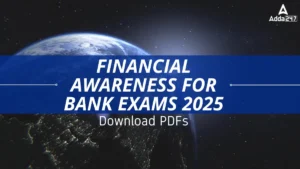Q1. Which among the following statements is not true when there is an increase in interest rate in an economy?
(a) increase in saving
(b) decrease in loan
(c) increase in production cost
(d) increase in capital return
(e)None of these
Q2. Multiplier process in economic theory is conventionally taken to mean:
(a) the manner in which prices increase
(b) the manner in which banks create credit
(c) income of an economy grows on account of an initial investment
(d) the manner in which government expenditure increases
(e)None of these
Q3. Who said ‘Supply creates its own demand’?
(a) Adam Smith
(b) J. B. Say
(c) Marshall
(d) Ricardo
(e)None of these
Q4. Say’s Law of Market holds that
(a) supply is not equal to demand
(b) supply creates its own demand
(c) demand creates its own supply
(d) supply is greater than demand
(e)None of these
Q5. The standard of living in a country is represented by its:
(a) poverty ratio
(b) per capita income
(c) national income
(d) unemployment rate
Q6.The method of calculating the national income are-
(a) Income method
(b) Value added method
(c) Expenditure method
(d) All the above
(e)None of these
Q7. Which of the following concepts are most closely associated with J. M. Keynes?
(a) Control of money supply
(b) Marginal utility theory
(c) Indifference curve analysis
(d) Marginal efficiency of capital
(e)None of these
Q8. When aggregate supply exceeds aggregate demand
(a) Unemployment falls
(b) Prices rise
(c) Inventories accumulate
(d) Unemployment develops
(e)None of these
Q9. In a business, raw materials, components, work in progress and finished goods are jointly regarded as
(a)capital stock
(b) Inventory
(c) Investment
(d) Net worth
Q10. Investment and savings are kept equal through a change in the level of
(a) Consumption
(b) Investment
(c) Government expenditure
(d) Income
(e)None of these
Solutions
S1. Ans.(d)
Sol. Interest rate increase the cost of borrowing, which results in lesser investment activity and the purchase of consumer durables. In a low interest-rate environment, shares become a more attractive buy, raising households’ financial assets.
S2. Ans.(c)
Sol. In economics, a multiplier is a factor of proportionality that measures how much an endogenous variable change in response to a change in some exogenous variable.
S3. Ans.(b)
Sol. “Supply creates its own demand” is the formulation of Say’s law . The rejection of this doctrine is a central component of the General Theory off Employment, Interest and Money (1936) and a central tenet of Keynesian economics.
S4. Ans.(b)
Sol. Say’s law, or the law of markets, states that aggregate production necessarily creates an equal quantity of aggregate demand.
S5. Ans.(b)
Sol. Per capita income or average income or income per person is the mean income within an economic aggregate, such as a country or city. It is calculated by taking a measure of all sources of income in the aggregate (such as GDP or Gross National Income) and dividing it by the total population.
S6. Ans.(d)
Sol. Primarily there are three methods of measuring national income. Which method is to be employed depends on the availability of data and purpose. The methods are product method, income method and expenditure method.
S7. Ans.(d)
Sol. The marginal efficiency off capital (MEC) is that rate of discount which would equate the price of a fixed capital asset with its present discounted value of expected income. The term “marginal efficiency of capital” was introduced by John Maynard Keynes in his General Theory.
S8. Ans.(c)
Sol. Deflation sets in when aggregate supply exceeds aggregate demand. Recession sets in. This will lead to a buildup in stocks (inventories) and this sends a signal to producers either to cut prices (to stimulate an increase in demand) or to reduce output so as to reduce the buildup of excess stocks.
S9. Ans.(b)
Sol. Inventory refers to raw materials, work-in-process goods and completely finished goods that are considered to be the portion of a business’s assets that are ready or will be ready for sale.
S10. Ans.(a)
Sol. Desired savings are kept equal to desired investment by responses to interest rate changes. Savings identity or the savings investment identity is a concept in National Income Accounting stating that the amount saved (S) in an economy will be amount invested (I).



 Tips to Prepare for Banking General Awar...
Tips to Prepare for Banking General Awar...
 Financial Awareness for Bank Exams 2025,...
Financial Awareness for Bank Exams 2025,...
 FCI Assistant Grade 3 Previous Year Ques...
FCI Assistant Grade 3 Previous Year Ques...


